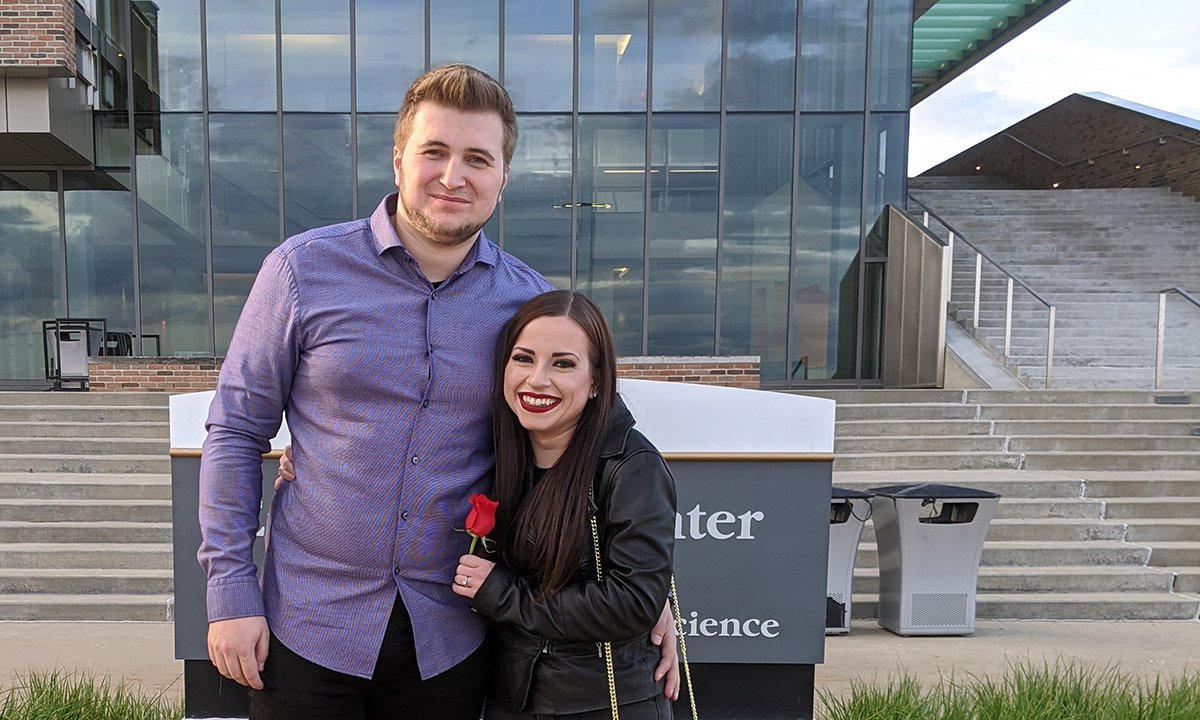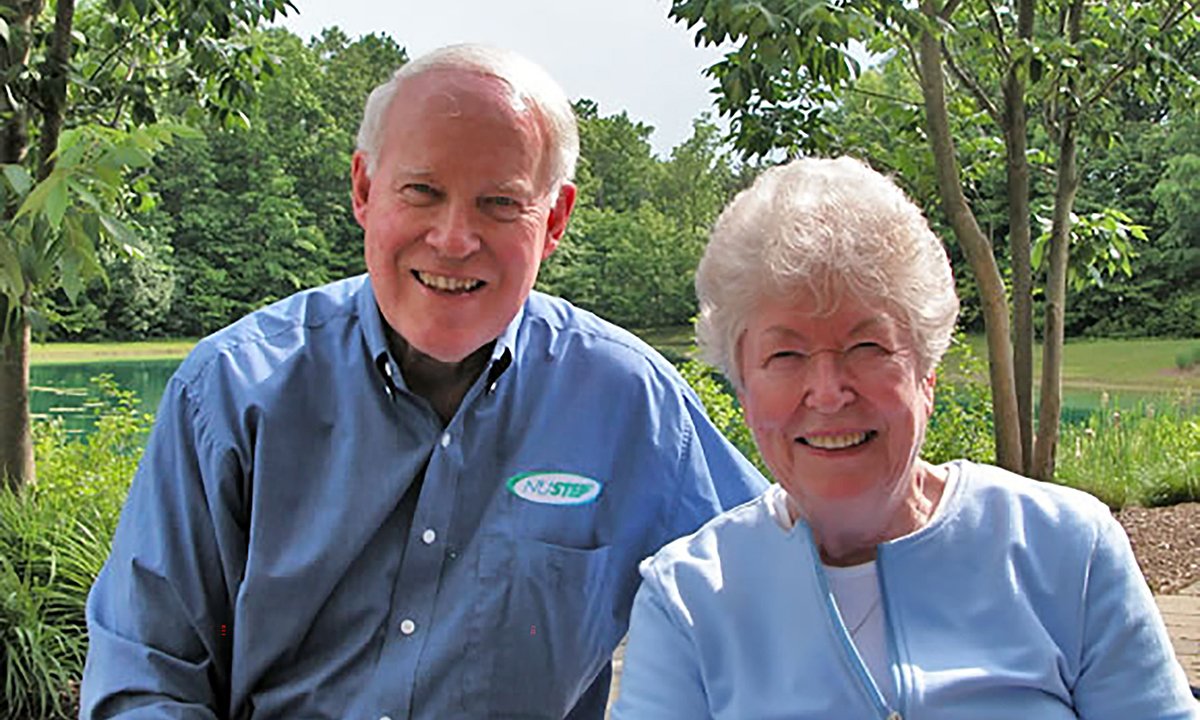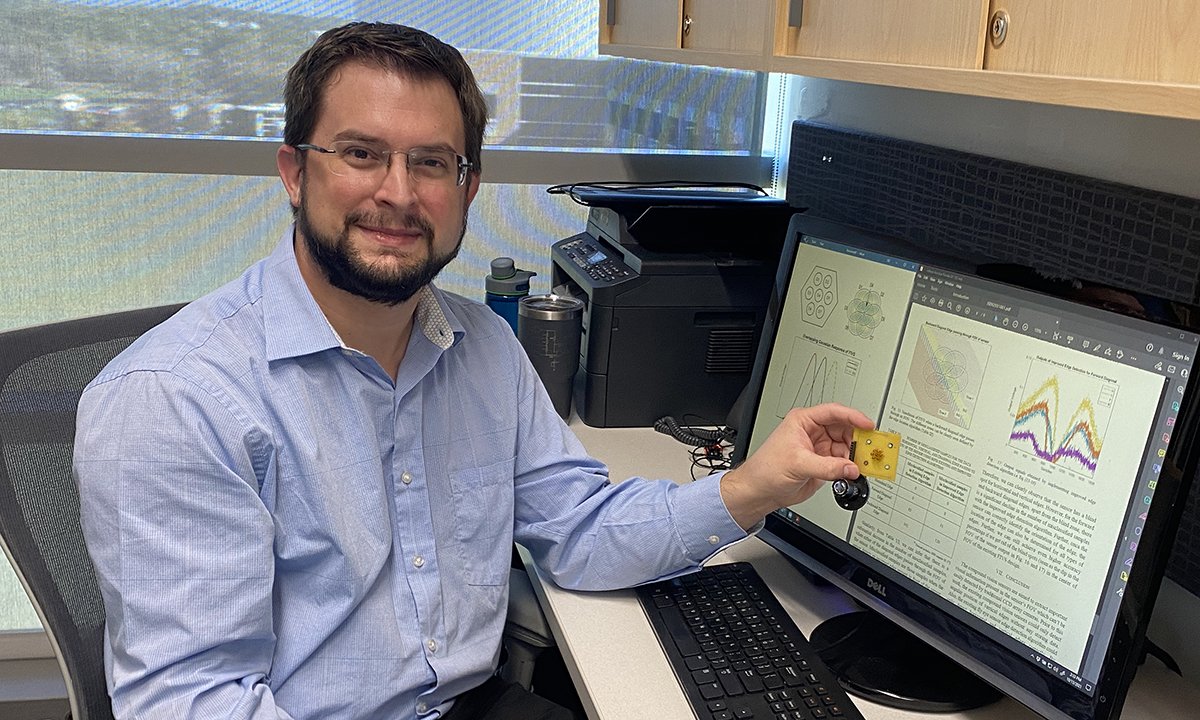Breaking New Paths
Dr. Vijitashwa Pandey develops an integrated approach to inform the local cost function for off-road vehicle path planning

Dr. Pandey and his students, Calahan Mollan and Jane Tarakhovsky, study data on Monument Valley as an example terrain for their research.
As new technologies develop, Oakland University’s researchers are often at the forefront of innovation. The emergence of intelligent and autonomous ground vehicles opens unprecedented opportunities to humankind for off-road travel and explorations, usually in uncertain and extreme conditions. As a result, off-road vehicle operation requires complex decision making – a task recently undertaken by Vijitashwa Pandey, Ph.D., associate professor of industrial and systems engineering.
Dr. Pandey’s research efforts generally revolve around engineering design and design-decision making, and this problem presents an area where formal decision-making methods are under-explored.
Optimal navigation of ground vehicles in an off-road setting is a challenging task. It calls for accurate modeling of the properties of the terrain, which needs to be reconciled with vehicle capabilities, while simultaneously addressing mission requirements as prescribed by human decision makers. Path planning – determining the path a vehicle will take to reach its goal – is the key decision in this process.
“Path planning affects distance travelled, duration of the mission, energy consumption, and even the chance the vehicle will actually complete its mission and will not be lost,” says Dr. Pandey, stressing the importance of developing the right algorithm to facilitate this task. “The most common approach relies on a cost function defined for each point in the terrain. Finding a suitable path is typically done using local information, such as terrain slope and soil properties. However, if this cost function is poorly chosen, especially when the paths are incrementally defined or re-planned in an event-driven fashion, the end mission performance may be jeopardized,” he adds.
Since a cost function often implies tradeoffs between mission attributes, the scientist and his team of SECS graduate and undergraduate students embarked on developing an integrated approach to inform the local cost function for path planning by calculating its effect on the overall multi-attribute utility from a mission.
“While mission attributes are usually defined for the entire mission, the cost functions are a local construct. For example, it is possible that an operator will tolerate a lower speed of operation if it reduces the chances of a vehicle slipping and getting stuck. Yet, at the cost function level, if the soil strength is not weighted correctly, the selected path may take a vehicle through a shorter but more dangerous path,” Dr. Pandey explains.
To find the best parameters for the cost function, Dr. Pandey’s study employed data on Monument Valley, a region in Utah, as an example terrain that features fine loamy sand, clay and unweathered bedrock soil types. Elevation data was obtained from the USGS Geospatial Data Gateway. After statistical interpolation using kriging, the scientist generated a rough path using a rapidly exploring random tree (RRT) algorithm.
“Optimization was achieved by utilizing a differential geometry-based method that finds the geodesic path, which minimizes the path length while incorporating a continuous tradeoff between terrain parameters. Alternate methods could also be used; however, testing of vehicle performance on the optimized path through simulation is essential. A physics-based simulator allowed us to test the path in order to calculate the mission attributes and the multi-attribute utility. We performed optimization by iterating through many different cost function weights until we converged on the one with the highest utility,” Dr. Pandey shares.
This study is just one aspect of Dr. Pandey’s research efforts that revolve around engineering design and design-decision making. Other application areas include product design and systems engineering, vehicle autonomy, design teams, reliability engineering and sustainable design that were explored by utilizing optimization theory, statistics, decision analysis and machine learning. Going forward, Dr. Pandey’s interest also includes quantum-inspired methods in engineering decision making as they help better explain decision making behavior of human beings.
“Dr. Pandey's work plays an important role in maintaining Oakland University's reputation as a base for quality systems engineering research and education through its master's and doctoral programs. Thanks largely to Dr. Pandey's efforts, OU’s undergraduate industrial and systems engineering degree is among very few degrees of this kind accredited in both Industrial Engineering and Systems Engineering,” says Robert Van Til, Ph.D., Pawley Professor of Lean Studies and chair of the industrial and systems engineering department.
Dr. Pandey’s work has been supported by various grants received from the automotive industry and the Department of Defense. He has over 40 peer-reviewed conference and journal publications as well as two textbooks. Anyone interested in his research can contact him at [email protected].

 December 15, 2021
December 15, 2021 By Arina Bokas
By Arina Bokas

